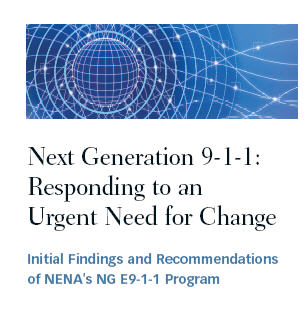Emergency Number Association describes E911 challenges, offers plan


I've spent a good bit of this past weekend poring over a rather scathing but constructive report from the National Emergency Number Association, the folks who bring you E911.
The report is entitled Next Generation 9-1-1:Responding to an Urgent Need for Change.
The 18-page report points to challenges, asks questions, and then makes some recommendations.
It seems as though some of the issues are technical and others are logistical- involving a far better coordination of emergency response agencies than we have now.
As to the problems with E911 over VoIP, NENA asks:
How do you locate a business traveler dialing 9-1-1 from a portable computer on the 10th floor of a hotel in an unfamiliar city? How do you route the IP-based 9-1-1 call and its associated data to the appropriate Public Safety Answering Point PSAP)? How can this data be seamlessly shared among all entities involved with emergency response?
Then, there are the funding issues involved in building and maintaining such a network, especially if these advanced services are not taxed.
How will the 9-1-1system maintain funding levels as more people rely on wireless or IP voice communication? And, if we are to migrate from today’s 9-1-1 system to IP-based emergency communications networks, how will such a migration be funded, and what jurisdictional, regulatory and legislative issues might arise?
NENA's report does not flinch from citing challenges where they see them:
To respond to the changing communications landscape, it is apparent that there is a critical need for an IP-enabled Next Generation 9-1-1 (NG 9-1- 1) system, one that is able to adapt rapidly to new technology and support new communications devices.
Yes, but to quote a phrase that all of us have heard many times too often, "who ya gonna call?"
A critical weakness in existing emergency communications systems is that responding agencies are generally isolated from each other. Presently, the “emergency response community” includes public and private organizations that need to share emergency information, including: law enforcement, fire
services, EMS, 9-1-1, emergency operations centers, hospitals,clinics, public health agencies, transportation agencies, public works departments, utilities, and others.
NENA mentions that The National Reliability and Interoperability Council (NRIC) Focus Group 1D, an FVV advisory group identified one solution within two complementary areas: technological and institutional.
The report goes on to explain the nature of this proposed, two-prong remedy:
In December 2005, NRIC published a final report that defined an effective future emergency communications system as an “internetwork” – a set of policies, tools, interfaces and standards that connect securely the multiplicity of local, regional and national wireline and wireless networks. Such an
internetwork will enable modern, integrated information capabilities to support local, regional and national emergency needs. It is, in effect, a system of systems.
NENA then outlines the ideas it has put on the table:
NENA’s 9-1-1 Future Path Plan also proposed a hierarchy of interconnected local, regional and national IP networks that would enable NG 9-1-1 and many other emergency communications applications. The resulting model is a set of coordinated applications on an IP internetwork that serves multiple governmental functions and seamlessly interfaces voice and electronic data. In addition to improving response for daily emergencies,such a model would also improve homeland security by providing a nationally coordinated emergency response system.
For a diagram of the Future Path Plan, see Pages 12-13 of the report.